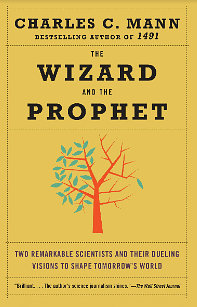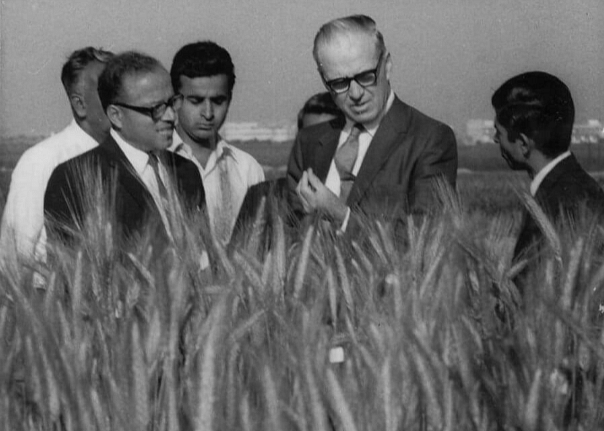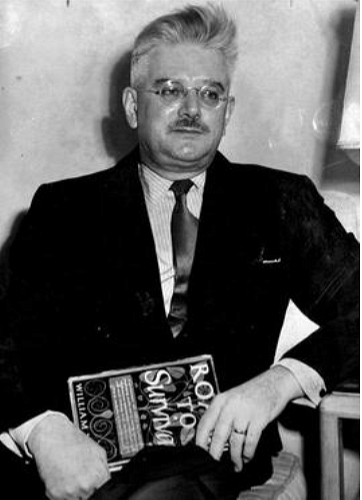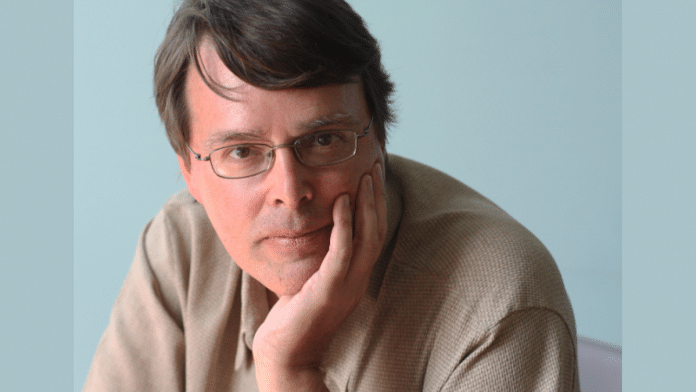India is now the world’s most populous nation of 1.42 billion surpassing China. In November 2022, the world population touched 8 billion. How to feed 10 billion people by 2050 with lesser natural resources, is a subject that has fascinated award-winning US science journalist and writer Charles C Mann. It was the central question of his 2018 book ‘The Wizard and the Prophet: Two Remarkable Scientists and Their Dueling Visions to Shape Tomorrow’s World’, examined through the life and work of two contemporaneous American scientists with competing visions
Vogt was the father of modern environmentalism while Borlaug’s role in ushering in the Green Revolution through crops that yielded significantly more may be better known in India.
The Plate’s Managing Editor Aarthi Ramachandran spoke to Mann about these two influential figures and what their prescription to feed the world’s most populous nation might be.
Aarthi Ramachandran: Who are William Vogt and Norman Borlaug. Why did you decide to write about them?
Charles Mann: I’m a science journalist and I’ve been reporting on these issues and talking to scientists, activists and politicians about agricultural research and feeding the world for 30-40 years now. Over time, I realised that the kind of answers I was hearing to my
questions fell into two broad camps, each of which I realised was associated with people who lived and died in the 20th century, that most people hadn’t heard of, but were profoundly important.
One of them was Norman Borlaug. He is the chief figure associated with the Green Revolution, which is the combination of advanced seeds, irrigation and high throughput fertiliser that doubled or even tripled cereal production and had an enormous impact on world history. In fact, particularly on Indian history, because India is where the central part of the Green Revolution occurred. He was an inspirational figure who told people you could use the tools of science and technology to produce more to give everybody
as much as they want.

At the same time, I would hear from another set of people that this approach was fundamentally flawed. They said this is crazy because the world has planetary limits and a carrying capacity that we simply cannot surpass. I began to wonder, where did this idea
come from? And I realised that there is a guy even more obscure called William Vogt, who wrote out in 1948 the founding ideas of what has become the modern environmental movement, which is the only successful ideology to emerge from the 20th century.

I thought, this is extraordinary because these two people were working at the same place, at the same time and came to such radically different conclusions.
And they collided. The collision between people who are following them, knowingly or unknowingly, characterised much of what we hear in debate about environmental issues today. I thought that seemed like something worth learning more about, maybe telling
other people about.
AR: Why the title ‘The Wizard and the Prophet’?
CM: I initially wanted to call it ‘The Engineer and the Druid’ because Borlaug had an engineering mentality. For everything there had to be a practical solution. The world just consists of atoms. So, engineers think, let’s rearrange those atoms in a way that’s
maximally profitable to everybody. Vogt had a much more spiritual idea, that there are these webs of interactions of life that were as close to something sacred as he
knew, and that we had to respect this. But my publisher said nobody knows what a druid is. I disagreed. We went out to a Barnes Noble bookstore and asked the clerk for a
book called ‘The Engineer and the Druid’. And the clerk looked at me and asked, “What’s the Druid?” So I decided to rename them ‘The Wizard’ and ‘The Prophet’. We are always talking about technology as wizardry. The Prophet, because Vogt was a person who was decrying both capitalism and the way that we were living.
AR: How were their ideas and visions for the world duelling, as the tagline of your book says.
CCM: The striking thing is both were born poor, into the lower strata of US society. Borlaug was born in 1914 in a very poor part of Iowa. His family had to work enormously hard all the time. They grew corn and he would have to harvest and shuck 250,000 ears of corn by
hand every year and then go to school. He was lucky to go to high school. He then went on to college and even to graduate school, which is an extraordinary thing for a person in that time and place. He grew up thinking of agriculture as terrible but necessary drudgery.
He wanted to lift people out of poverty. And by a series of coincidences, he ended up right after WW2 working in Mexico, on a program established by the Rockefeller Foundation to focus on maize. But there was a tiny branch of this program that tried to breed wheat that was resistant to a disease called stem rust, and he was put in charge of it.
He had no money. He didn’t speak Spanish. He’d never been outside the United States. He’d never worked with wheat. He’d never done any kind of plant breeding. Borlaug was just wildly unqualified for the job. But he was enormously hard working. He decided to do a massive breeding program just all by himself, where he got thousands and thousands of different varieties and crossed them, exposed them to stem rust, and took the ones that
survived. Through this toil of a decade, he created a kind of a super wheat that was not only resistant to stem rust, but also almost five times more productive than the previously known varieties.
It was really a remarkable accomplishment. Borlaug did many things that were against what was in the textbooks, but he didn’t know it. It turned out, partly by sheer luck, the textbooks were wrong. And it was a signal event in the history of humankind.
Vogt was born in 1902 in a poor part of Long Island in New York. He saw the natural world around him flattened by a deluge of houses, people, roads and cars. He was afflicted by polio when he was young. He walked with a cane and a limp and braces for all of his
life.
Vogt became an ornithologist during the Great Depression. And by great luck managed to get a job in Peru where his task was to maximise the population of cormorant birds on the islands off the country’s coast. The little-known islands off the coast of Peru called the Chincha Islands have been the home for thousands of years to cormorants. Roosting there in great numbers over thousands of years, they left enormous deposits of excrement which were mined by Asian slaves in the 19th century and became the world’s first high intensity fertilizer. In fact, the whole idea that you could buy fertilizer in a store and then sprinkle it on the land and create an enormous productivity boost came from this mountain of bird
excrement in the Chincha Islands. There was a global market for this natural fertilizer. But by the 1930s the bird poop deposits were going down and they wanted him to, as he put it, “augment the increment of excrement”.

There he came to a conclusion that was startling and important: that in some sense it was impossible. And the reason was the birds eat fish that were in the enormous fisheries off the coast of Peru. But fisheries are controlled by the temperature of the water. There are
cold water fisheries during La Nina years. When the waters get warm in the El Nino years, the fish move out from the shore and they move so far that the cormorants can’t reach them. When that happens, of course, the fish production is very low and the cormorants die.
So, he realised that if you do increase the number of cormorants to augment the increment of excrement, they will die in the next El Nino year. It was Vogt’s great contribution to say, wait a minute, this isn’t just true for islands off the coast of Peru, but for most, if not all, natural ecosystems. They have limits on how much they can produce. And if you surpass those limits, you destroy them. This, he argued, was true for the earth as a whole. In 1948, he wrote The Road To Survival. It’s what I call the first, modern, we’re-all-going-
to-hell book.
It is striking that Vogt was working in Latin America and indeed later in Mexico, at the same time as Bolraug. Bolraug looked at the problems and the people and said we need to give them more tools.
Vogt looked at the exact same landscape in the exact same conditions, and he said, the land is being over exploited. We need to pay attention to it. And this led to a clash between them that has continued to the present day between people who are focused on producing more and consuming less.
AR: What are the hard and soft paths—that Borlaug and Vogt respectively advocated—that you write about? Can you give us some examples of how these ideas are relevant today?
CM: This is a term I’ve borrowed from people who look at water. There’s probably no disagreement that the most pressing environmental problem is securing an adequate supply of fresh water for everyone.
The hard path is to say what we need to increase the supply. That involves things like mining aquifers that are not yet exploited, or desalination. The idea is you make more using technology. That’s the wizards’ answer.
The prophets will find it crazy. To begin with, this requires enormous amounts of energy. In addition, the salt from desalination is toxic. It’s extremely hard to get rid of. They are in the soft path. They say humans use water in crazily wasteful ways. Phoenix in the US;
extremely dry Southwest is full of golf courses. Hectares of grass is grown and soaked with water in very hot weather.
You can go into the central part of California which is a big agricultural area and see people growing rice in giant pools of water. That water is transported from mountains thousands of miles away to evaporate in the desert. So, the prophets would say, don’t grow rice or play golf in the desert.
AR: India is perhaps the country where the Green Revolution had the most significant impact. One of the central figures of that from an Indian perspective is Dr MS Swaminathan. How do you see his role, and what were the Borlaug-Swaminathan interactions like?
CM: Swaminathan was a critically important partner for Borlaug whose name is far less known than it should be. He is a really remarkable man in every way: a super good scientist, part of that first generation of post-Independence; did first-rate work in the West and came back to India because he wanted to help his new country. He understood India in a way that Borlaug didn’t.
The development model in India associated with Nehru saw agriculture as stagnant. There were a huge number of people just mired in their farms and barely producing. The trick was to get them off of the farm so that they could be industrial workers and make
steel and cement and all the things necessary for industrialized society.
So, the budgets for development were heavily skewed towards the industrial sector with the result that the agricultural sector really did lag. And this came to a head in the 1960s with the famine in Bihar.
There’s been a lot of historiography or argument about how bad it was, but it was clearly very real and also something that was used for political purposes. It was very embarrassing for the Congress government. They didn’t want to admit that there was a famine. Then there was a very paternalistic view of the US government, which was trying to make India a kind of client state. The US wanted to trumpet the amount of aid it gave to India. So,
from their point of view, they want to maximize the impression of the problem, while the Indian government wanted to minimize it. Borlaug came with wheat that he had developed in Mexico that he believed was a universal type of grain, and he brought it to India.
But Swaminathan did something incredible to it which the world never really understood. He took Borlaug’s wheat, which was red and therefore dark in a way that was not good for chapatis and roti, and bred it to be white like Indian wheat. It is important to produce food that people want. Swaminathan understood that. He adapted it to Indian conditions, gave it an Indian name, and was enormously successful.
AR: If Vogt had to come up with a prescription for India today what would it look like? We know what Borlaug would have said because we’ve lived through his ideas here in India.
CCM: Well, first, he would say that there are too many people, not just in India, but everywhere. The benign view of this argument is that you’re just making it so difficult for natural systems to function because they have to function at the top of their carrying capacity. The less benign part of this is that you force down the population of black and brown people around the world. This led to particularly in China, to tens of millions of forced sterilizations, forced abortions which were terrible.
You would like to think that Vogt would have learned from this. I think the answer that a modern-day person would give is if you want to reduce the pressure on natural systems, empower women. It seems to be a universal human characteristic that women, you
know, don’t want to have 127 kids! They could then run their own businesses, be teachers or do the things that anybody else would want to. The Vogtian thing would be to make that possible, to make sure that you have good schools, and adequate health care. So, I would say his answer would be to have good social policies.
Aarthi Ramachandran is managing editor with The Plate.
Also read: Chidambaram Subramaniam—the force behind India’s green revolution who never took credit for it






